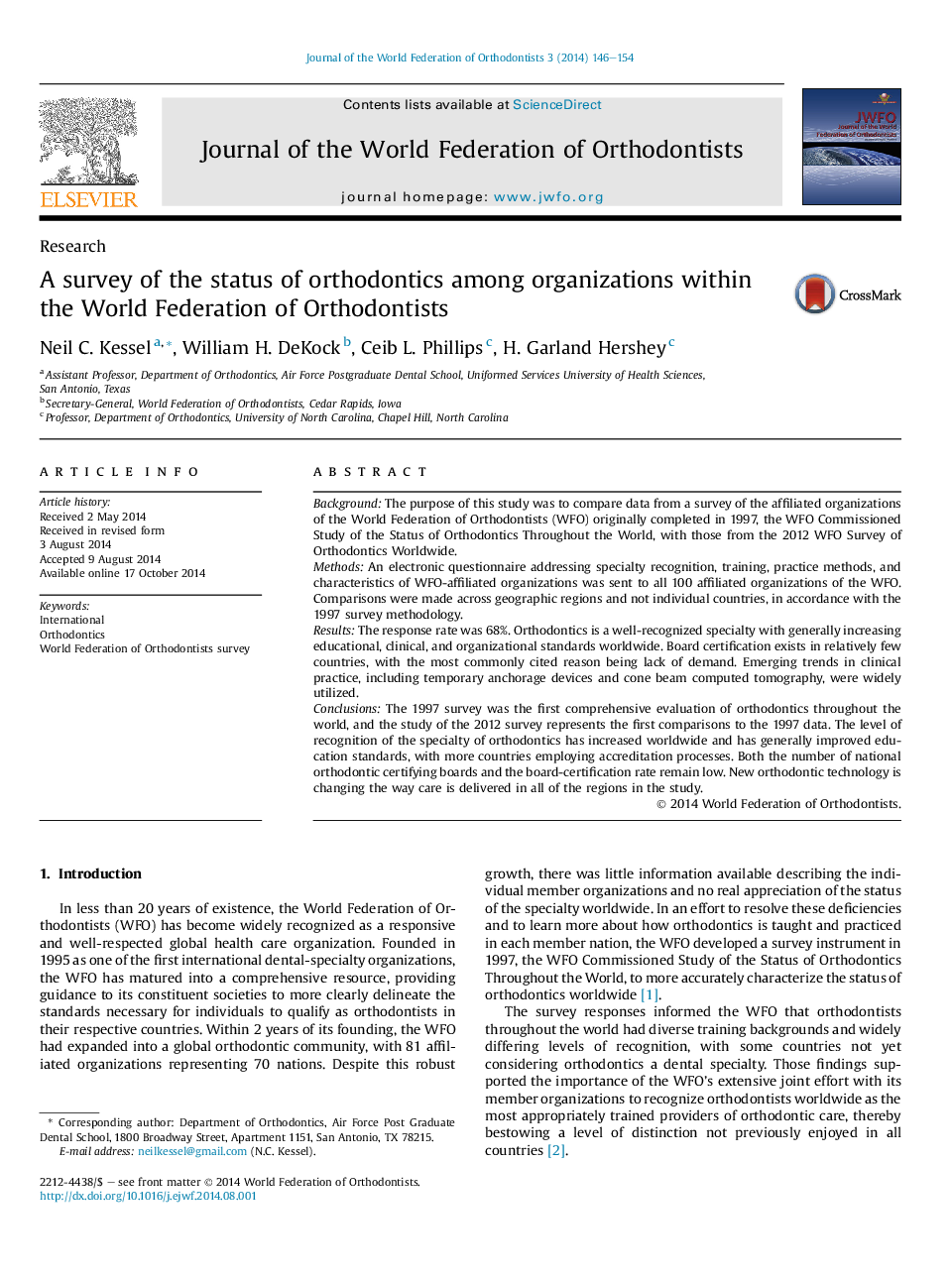| Article ID | Journal | Published Year | Pages | File Type |
|---|---|---|---|---|
| 3484968 | Journal of the World Federation of Orthodontists | 2014 | 9 Pages |
BackgroundThe purpose of this study was to compare data from a survey of the affiliated organizations of the World Federation of Orthodontists (WFO) originally completed in 1997, the WFO Commissioned Study of the Status of Orthodontics Throughout the World, with those from the 2012 WFO Survey of Orthodontics Worldwide.MethodsAn electronic questionnaire addressing specialty recognition, training, practice methods, and characteristics of WFO-affiliated organizations was sent to all 100 affiliated organizations of the WFO. Comparisons were made across geographic regions and not individual countries, in accordance with the 1997 survey methodology.ResultsThe response rate was 68%. Orthodontics is a well-recognized specialty with generally increasing educational, clinical, and organizational standards worldwide. Board certification exists in relatively few countries, with the most commonly cited reason being lack of demand. Emerging trends in clinical practice, including temporary anchorage devices and cone beam computed tomography, were widely utilized.ConclusionsThe 1997 survey was the first comprehensive evaluation of orthodontics throughout the world, and the study of the 2012 survey represents the first comparisons to the 1997 data. The level of recognition of the specialty of orthodontics has increased worldwide and has generally improved education standards, with more countries employing accreditation processes. Both the number of national orthodontic certifying boards and the board-certification rate remain low. New orthodontic technology is changing the way care is delivered in all of the regions in the study.
